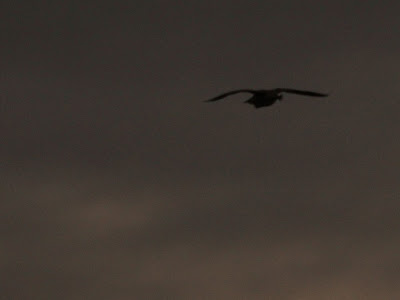
A further 100 reported drinking ftom the scrape at Hempholme where there has been up to 6 snipe commuting between here and South Marsh East. The sparrowhawk has been attentive at all times as was this kestrel:

Winter hit in a big way over the last week with all the main players arriving on the scene; 15 whooper swans on the 8th and 2 on the 10th, the first brambling on the 10th, with the first woodcock. Goosander are a regular winter roost site and three of those have arrived too with one hunting the river Hull at Hempholme last Thursday. These curlew are roosting in numbers on South Marsh East:

All we need now is a smew! One winter specialist has been here all along - the bittern has reappeared. Where it goes in the day is anyone's guess - but seemingly it comes in to roost nightly on South Marsh West outside the back to back hides in the reeds on the left hand side. This was the view on the 7th from L shaped hide - but it was seen as recently as Tuesday at 16:26:
The other highlights of the last few days have included up to 25 pink footed geese, the lone-white fronted goose, marsh harrier, crossbills in the car park, up to 5 little egrets commuting from the upper Hull to roost on the alders of Watton Nature Reserve every night over D res, barn owl showing well around the north end, 2 jays, green sandpiper, 14,000 black headed gulls, 12,280 common gulls, 490 herring gulls, and a stonking 1,300 great black backed gulls. This great crested newt was preparing for winter but seemingly caught out in the cold on a path - whilst protected by law there would seem no harm in moving one to the safety of a nearby log pile out of harms way:

A mole on the path outside North Marsh hide by Tony Simpson makes for something a bit different:

Excellent work by the volunteer team as ever - here nearing completion of the management of 100yds of willow on North Scrub where it was 'mangroving' and spreading into adjacent grassland and blocking North Marsh. Whilst brutal lookinng it provides the tapestry of habitats that attract a wide range of species - and in 10 years we'll be back like the Forth Bridge!:



.JPG)
